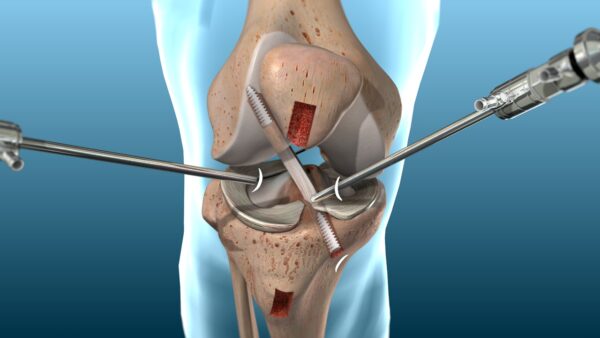What is ACL? Anterior Cruciate Ligament (ACL) is a vital component of the leg that connects the femur and the tibia. It ensures that the tibia doesn’t part ways with the femur. Additionally, It also provides stability to the knee. Unlike other parts of the body such as the skin, lungs and heart, the ACL is unable to repair itself and requires ACL Reconstruction Surgery.
Is surgery required for a damaged ACL? Damage to the ACL is most frequently seen in individuals who are involved in high-intensity sports such as football and basket ball. However, a damaged ACL can also be seen in highly active individuals as well. If someone wishes to forgo the reconstruction surgery, they will have issues in the future where they will continue to experience knee instability.
Physical therapy may help to a certain degree but will not eliminate the problem. Some doctors are of the opinion that if the individual doesn’t wish to remain active, physical therapy may be an alternative. However, for those who are physically active, it is highly recommended. What are the options for ACL Injury Treatment? With the marvels of science come some very advanced options that are available to patients today.
Multiple hospitals provide affordable surgery packages to patients all across India. Some of them include:
Autograft: In this type of surgery, the patient’s own tissue from the hamstring, patellar or quadriceps, is used to replace the damaged ACL. The advantage of using the patient’s tissue is that the body is less likely to reject it and there will be fewer complications. The disadvantage of this procedure is the duration of the surgery increases, along with the stress endured by the patient’s body.
Allograft: In this type of surgery, the grafting tissue is used from a cadaver. While this eliminates the need for doctors to extract tissue for the patients, there are associated risks of infection if the cadavers haven’t been screened properly. What happens during surgery? The entire surgery is approximately a one-hour outpatient procedure i.e, the patient can leave the hospital on the same day following the surgery. The most common approach is where a few tiny incisions are made near the affected region. This significantly reduces the chances of infections and blood loss. Through these incisions, the surgeon shall carefully insert cameras, fluids, grafting material, shavers, etc. for the procedure.
A surgeon will then use a device called the retro flipcutter to drill a hole through the femur and tibia which intersect at the knee joint. This will be used to insert the grafting material in the position of the ACL. A grappling hook and a bio-absorbant screw will be used to hold the grafting material in place. A bioabsorbable screw means that it is readily incorporated into living tissue and is usually made of substances such as biphasic calcium phosphate rather than metal.
Will there be complications during and after surgery? As with any surgery, there will be associated risks involved. However, there have been many advances in surgical procedures that have reduced the number of complications. Patients have been known to have some associated pain after the surgery. This is natural as the body will need to heal itself following the procedure. The doctors will prescribe appropriate medications that will help in pain management and swift recovery.

